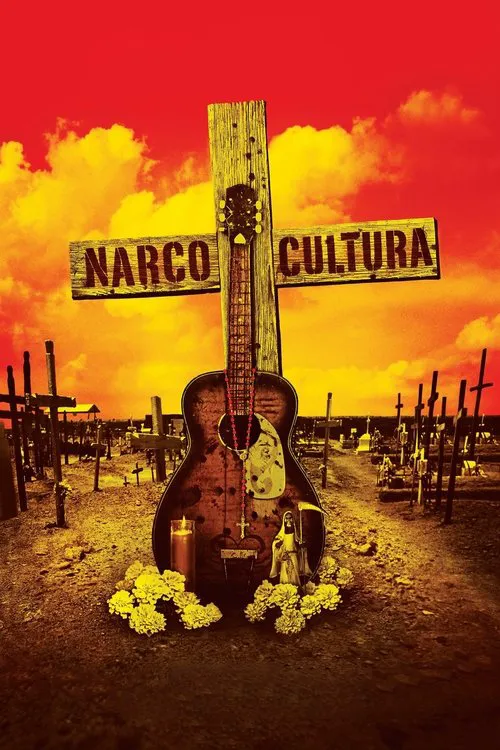Narco Cultura

Plot
The documentary film Narco Cultura delves into the enigmatic and increasingly prominent phenomenon of narco-traffickers in Mexico and the Latin American community in the United States. These individuals, often glorified and romanticized as outlaws, have become symbols of fame and success. They embody a peculiar vision of the American Dream that diverges from the traditional notions of hard work and perseverance. For many in the impoverished and marginalized communities in Mexico and the US, the rise of narco-traffickers has created a warped sense of hope and escape. These individuals can boast lavish lifestyles, flaunt extravagant wealth, and exercise an unrelenting fear and respect. They embody the idea that one can rise above social and economic hardships by any means necessary. The film presents an unflinching portrayal of this complex issue, exploring the dark underbelly of narco-culture and the cyclical relationship between addiction, violence, and the pursuit of wealth. It highlights the stark contrasts that separate these traffickers' lives from those they've been accused of terrorizing. Throughout the film, directors Shaul Schwarz and Michael Noguchi reveal the stark realities faced by various individuals and communities caught in the midst of the narco-trade. Their exploration spans from the high-profile figures to the ordinary citizens trying to navigate the treacherous landscape. This narrative is often marked by stark juxtapositions – a young artist painting narco-themed murals next to an innocent victim of violence; a mother mourning the loss of her son, while her brother boasts about the family's illicit wealth. Narco Cultura also captures the voices and perspectives of those who've chosen to engage with this world. From former narco-soldiers reflecting on their participation in the trade to musicians who romanticize these outlaws in their songs, the film presents an empathetic and multifaceted exploration of the motivations and reasoning behind this phenomenon. Some, like the artist mentioned earlier, find creative solace in depicting the narco-world, elevating its complexities to art. Their creative work may be a form of catharsis, an attempt to express the emotional turmoil and turmoil they face when witnessing their own loved ones caught up in this destructive cycle. One of these characters is the young musician, Carlos Sadness. His music, a fusion of traditional Mexican melodies with dark and gritty narratives, paints vivid pictures of life in a city plagued by violence and poverty. In one particular scene, a young woman describes her family's struggles as the son gets caught up in the cycle, leading away from education and a secure life. While this might be an overly romanticized perception, a deeper message is conveyed here. As the documentary moves further into the realm of the US-Mexico border, it's impossible to ignore the symbiotic relationship between the two countries. On the US side, the film highlights the often-inaccurate yet influential media portrayals of narco-traffickers. This distorted image perpetuates the cycle of fear, fueling anti-immigrant sentiment and further complicating the problem. The film raises profound questions about the power of mass media and the way it shapes perception and social attitudes. In one thought-provoking scene, a radio DJ's aggressive and inflammatory remarks about the Mexican border are juxtaposed with those of a Mexican rapper, who expresses the frustrations and disappointments experienced by young people in their communities. These contrasting perspectives underscore the urgent need for more nuanced and informed discussions about the complex relationships between poverty, violence, and the economy. Through a deeply personal lens, Narco Cultura offers a gripping narrative of hope and desperation, where lives hang precariously between hope and despair. As with other works that explore the complexities of human nature, it reveals the complexities beneath the surface – an intricate dance of addiction, fear, and obsession that has engulfed communities from both sides of the US-Mexico border. In the end, Narco Cultura offers a profound, and uncomfortable look into a harsh reality – one in which the lines between hero and villain often get blurred. The film stands as a testament to the enduring human spirit, even as the world around it becomes increasingly entrenched in a culture of violence and lawlessness.
Reviews
Recommendations



